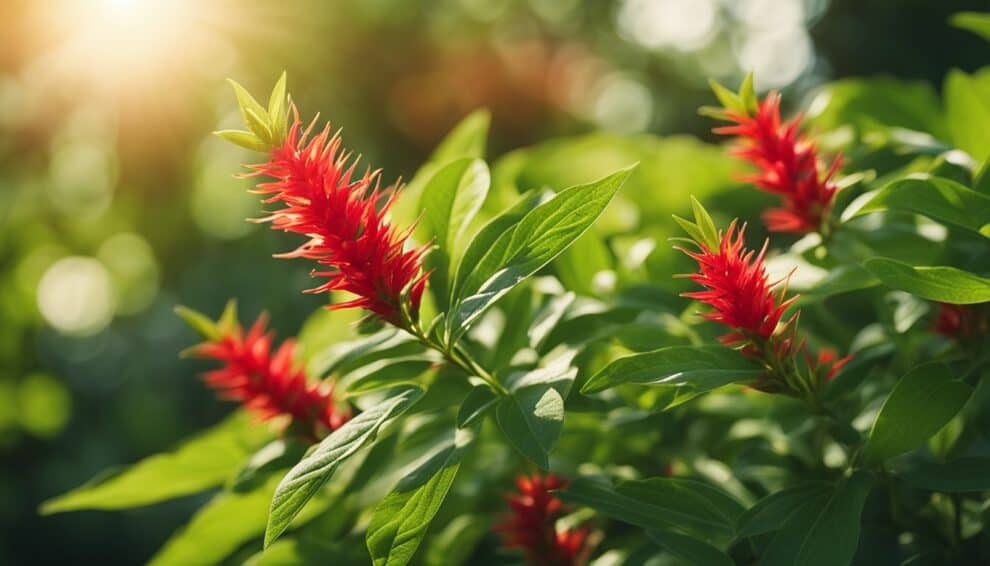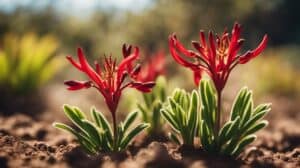Cigar plant (Cuphea ignea) is a unique and vibrant plant that is often used in landscaping and gardening. Its fiery orange-red flowers make it a popular choice for adding color and texture to gardens, patios, and balconies. Propagating cigar plant is relatively easy and can be done through several methods, including stem cuttings and seed germination.

In this article, we will provide a comprehensive guide to propagating cigar plant. We will cover the different methods of propagation, the best time to propagate, and the tools and materials needed for successful propagation. Whether you are a seasoned gardener or a beginner, this guide will provide all the information you need to propagate cigar plant and enjoy its beauty in your own garden. So, let’s get started!
Understanding Cigar Plant Propagation
Propagation Basics
Cigar plant propagation can be done through various methods, including seed propagation, stem cuttings, and division. However, stem cuttings are the most commonly used method for propagating cigar plants.
When taking stem cuttings, it is important to use healthy plants with strong stems. The stem cutting should be taken from the top of the plant and should be around 4-6 inches long. The leaves on the lower half of the stem should be removed, leaving only a few leaves on the upper half.
The stem cutting should then be dipped in rooting hormone and inserted into a well-draining potting mix. The potting mix should be kept moist but not waterlogged. The cutting should be placed in a warm, bright area and should be covered with a plastic bag to create a humid environment.
Best Time to Propagate
The best time to propagate cigar plants is in the spring or early summer when the plant is actively growing. This allows the stem cutting to establish roots quickly and produce new growth before the winter months.
It is also important to avoid propagating cigar plants during extreme temperatures or when the plant is experiencing stress, such as during a drought or after being transplanted.
By following these simple tips, propagating cigar plants can be a fun and rewarding experience for any gardener.
Methods of Propagating Cigar Plant

Cigar Plant (Cuphea ignea) is a beautiful flowering plant that can be propagated through various methods. Here are the three primary methods of propagating Cigar Plant:
Seed Propagation
Seed propagation is the most common method of propagating Cigar Plant. The seeds of Cigar Plant are small and can be sown in seed trays or directly in the ground. It is best to sow the seeds in the early spring or late fall. The seeds should be sown in well-draining soil and kept moist until they germinate. Once the seedlings have grown to a height of about 2 inches, they can be transplanted to their final location.
Cuttings Propagation
Cuttings propagation is another method of propagating Cigar Plant. The cuttings should be taken from a healthy plant and should be about 4-6 inches long. The cuttings should be dipped in rooting hormone and planted in well-draining soil. The soil should be kept moist until the cuttings have rooted. Once the cuttings have rooted, they can be transplanted to their final location.
Division Propagation
Division propagation is the easiest method of propagating Cigar Plant. The plant should be dug up and divided into smaller sections. Each section should have a healthy root system and a few shoots. The divided sections should be planted in well-draining soil and kept moist until they have established themselves.
In conclusion, propagating Cigar Plant is an easy and rewarding process. By using any of the above methods, one can easily propagate Cigar Plant and enjoy its beautiful flowers in their garden.
Caring for New Cigar Plants

Once you have successfully propagated your cigar plants, it is important to care for them properly to ensure their growth and survival. Here are some tips on how to care for your new cigar plants:
Watering and Feeding
Cigar plants require regular watering to thrive. It is important to keep the soil moist but not waterlogged. Overwatering can lead to root rot and other problems. Water the plants deeply once or twice a week, depending on the weather conditions.
Feeding your cigar plants with a balanced fertilizer can also help promote healthy growth. Use a slow-release fertilizer every four to six weeks during the growing season. Avoid over-fertilizing, as this can lead to excessive leaf growth and reduced flowering.
Light and Temperature Requirements
Cigar plants require full sun to partial shade to grow and flower properly. They can tolerate some shade, but too much shade can lead to leggy growth and reduced flowering.
Cigar plants are native to warm climates and prefer temperatures between 60 and 85 degrees Fahrenheit. They can tolerate some frost but should be protected from temperatures below 40 degrees Fahrenheit.
Transplanting Tips
If your cigar plants outgrow their containers, it may be time to transplant them into larger pots or into the ground. When transplanting, be sure to handle the plants gently to avoid damaging the roots.
Choose a well-draining soil mix and plant the cigar plants at the same depth they were previously growing. Water the plants thoroughly after transplanting and avoid fertilizing for a few weeks to allow the plants to adjust to their new environment.
By following these tips, you can help your new cigar plants thrive and enjoy their vibrant blooms for years to come.
Frequently Asked Questions

What are the steps for propagating Cuphea ignea from cuttings?
To propagate Cuphea ignea from cuttings, follow these steps:
- Take a cutting from a healthy, mature plant.
- Remove the leaves from the lower half of the cutting.
- Dip the cut end of the cutting in rooting hormone.
- Plant the cutting in a well-draining potting mix.
- Water the cutting thoroughly and cover it with a plastic bag to create a humid environment.
- Place the cutting in a bright, indirect light location.
- Keep the soil moist but not waterlogged.
How often should I water Cuphea ignea during the rooting process?
During the rooting process, it is important to keep the soil moist but not waterlogged. Water the cutting whenever the top inch of soil feels dry to the touch.
Can Cuphea ignea be easily propagated indoors?
Yes, Cuphea ignea can be easily propagated indoors. Follow the same propagation steps as you would for outdoor plants.
Are there different varieties of cigar plants that can be propagated the same way?
Yes, there are different varieties of cigar plants that can be propagated the same way. However, it is important to note that not all varieties of Cuphea are suitable for propagation from cuttings.
What is the expected growth height for a mature Cuphea ignea plant?
A mature Cuphea ignea plant can grow up to 2 to 3 feet tall.
Is the Cuphea ignea a perennial plant that will return each year?
Cuphea ignea is a tender perennial plant that is typically grown as an annual in most regions. It may survive mild winters in zones 9-11, but it is best to treat it as an annual in colder regions.













